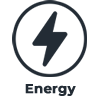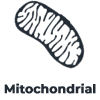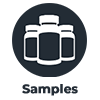Nitric oxide is a very interesting neurotransmitter within the body that mainly functions as a blood flow optimizer. What sets it apart from most of the neurotransmitters in our body is that it is a gas. This gives it a few distinct advantages, such as being able to diffuse through membranes rapidly, but it also has a few unique traits, such as a very short duration of action. The main purpose of nitric oxide in the body is to relax blood vessels, allowing for increased blood flow, which promotes blood flow through the body while also increasing blood flow to the brain. This makes nitric oxide boosters very popular among athletes. By promoting better blood supply to the muscles, we can ensure that things like lactic acid are moved out of the muscle, and that various nutrients are moved into the muscle. This will allow for slight gains in strength acutely, but more importantly, it will lead to increases in muscle recovery. In addition to this, extra blood flow can be quite the confidence booster, as it will make the muscles look much bigger post-exercise due to ‘the pump’ which is something Arnold Schwarzenegger made very popular in the documentary "pumping iron." Due to this, nitric oxide supplements are also often referred to as muscle pump supplements.
Nitric oxide function goes far beyond helping enhance ‘the pump’, as it serves many other purposes throughout the body and even throughout the brain. The most obvious benefit, again has to do with blood supply. By relaxing blood vessels, nitric oxide can also help promote healthy blood pressure. Nitric oxide, by working on nitric oxide neurons, can also relax other smooth muscles; which can support digestive health.













